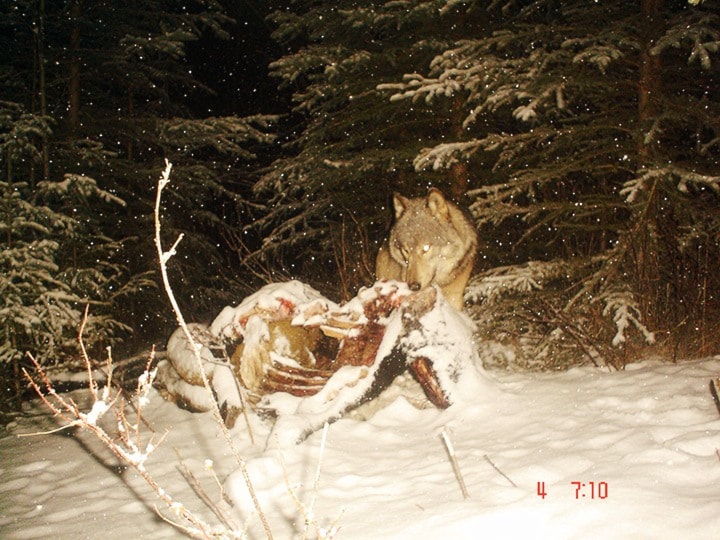The regional cattlemen's association recently formed a new committee to help ranchers deal with wolves and other livestock predators.
Skeena Regional Cattlemen's Association is part of a provincial policy-making association, and is made up of four locals including the Pleasant Valley Cattlemen's of the Houston area; the Bulkley Valley Cattlemen's, Smithers area; the Lakes District Cattlemen's, Burns Lake; and the Skeena Stockmen's, west of Smithers.
The Pleasant Valley Cattlemen's, Six Mile Hill to Hungry Hill, includes 25 to 30 ranches and has one business meeting a year, with directors taking care of most routine business and issues.
The Skeena Regional Cattlemen's Association formed a Predator Control Committee and met last Friday in Houston with CO Sgt. Darrell Ashworth, provincial predator conflict prevention and response coordinator from Williams Lake, to talk about predator issues.
Ranchers have been seeing more and more wolves on their farms, closer to town than they've ever seen them before, said Gerrit Keegstra, predator control committee member.
The committee, made of eight local ranchers from Burns Lake to Smithers, met with Ashworth and talked about the current predator issue, the need for a committee and how they might move forward towards wolf population control, such as getting trappers involved, Keegstra said.
Keegstra says one of the main purposes of the committee is to begin collecting data about wolves and predators, including solid numbers of verified predator kills on livestock and wolf packs in the area, and pictures.
Asked about the wolf population, Sgt. Kevin Nixon, Sergeant Conservation Officer for the Skeena region, says that it's hard to give a number or say whether the population is increasing or just cycling, but he has definitely seen lots of wolf signs and heard from hunters that wolf numbers seem to be up.
"We're out talking to hunters all the time and we're hearing from hunters that wolf numbers are higher than they have been in the past," said Nixon, adding that they've received six calls from ranchers about wolf-killed livestock this year so far.
When asked what might cause an increased wolf population, Nixon said he wasn't sure.
"I spoke at length with our wildlife biologist about it, and at this point in time there is no real theories as to, if the wolf population is higher, why it is," he said.
Besides forming the committee, the Skeena Regional Cattlemen's Assoc. also gave a predator attack training course with CO Sgt. Ashworth, said Shirley Hamblin, director of both Skeena Regional and Pleasant Valley Cattlemen's and past president of Pleasant Valley Cattlemen's.
Thirty-five ranchers from Burns Lake to Moricetown became certified verifiers for predator kills through the one-day course with Ashworth at the Houston Library last Saturday, said Hamblin.
Basically they were given the tools so that if they find dead stock, they can figure out what happened, said Hamblin.
Ranchers can get 70 per cent compensation for predator-killed cattle through the Ministry of Agriculture, but it has to be verified as a predator kill, said Linda Dykens, president of the Pleasant Valley Cattlemen's Association.
Hamblin says Predator Control Committees are being set up across B.C. and will give cattlemen input on provincial discussions about what can be done about the ongoing predator issues.
